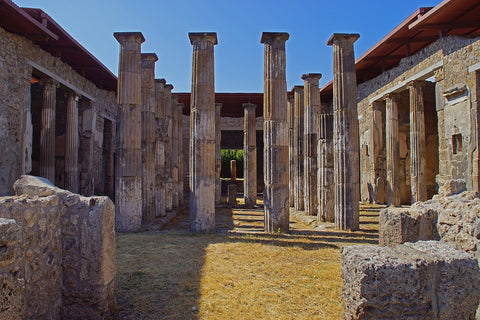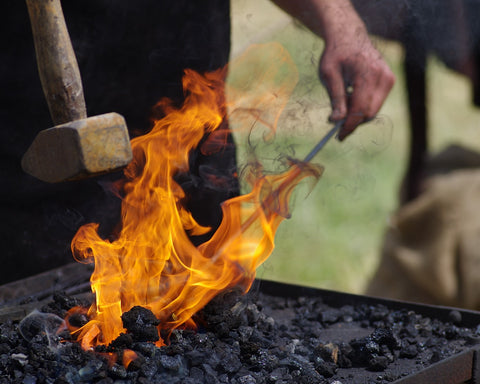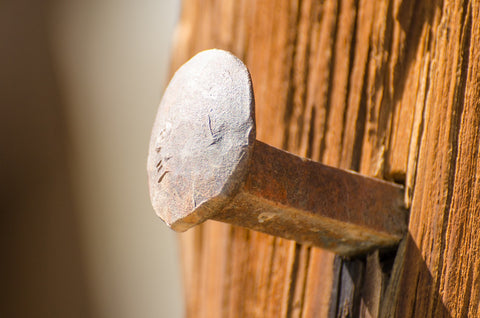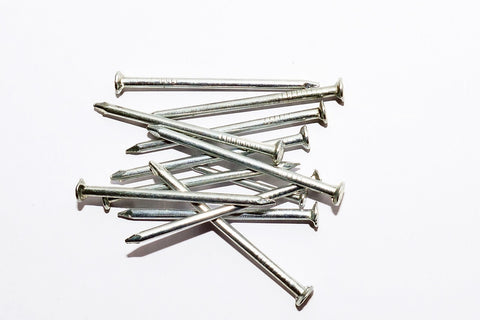Iron Nails
History doesn't name the person who first joined two pieces of wood with a sharp implement, but the results of that discovery are all around us. From the desk you sit at, to the bridge you cross on the way home, and every building and man made structure you can see. The creation of the nail has changed our lives forever.

The History of Hand Forged Nails
Nails have been used since the Bronze age and many acheological sites have found hand forged nails that were used to hold pieces of wood together.
There is evidence of large-scale nail making from the Romans era, 2000 years ago. In the UK, where many Roman villa sites have been excavated, ancient nails have been found. At the fortress of Inchtuthil in Perthshire, 875,000 nails weighing 7 tonnes were found.

The Hand Forging Process

Blacksmiths heat iron ore with carbon to form a dense mass of metal, which is then placed into the shape of square rods and left to cool. After re-heating the rod, the blacksmith cut the nail length off and hammer all four sides of the softened end to form a sharp point. The hot nail is then inserted into a hole in the anvil and, with four strikes of the hammer, the blacksmith forms the rose head.
This traditional design has the benefit of four sharp edges which cut deep into timber. When the wood fibres are damp they swell and bind around the nail, ensuring an extremely strong fixing.

Automated Nail Production
In the late 1700s, a machine was designed to automate the process of nail production. This machine had three essential stages: first, a triangular strip of metal was cut, giving the desired width of the nail; next, a lever held the metal in place, and then a third lever formed the head. The metal was then turned through 180 degrees to cut the next equal and opposite nail shape off the strip. These are known as cut nails.
By the 1900’s, the first coils of steel wire were produced. Automatically produced wire rails could be made without human intervention and were cheaper to produce. These thinner nails do not have as much holding power as the previous hand made nails, however with modern construction methods, this did not matter as much. The wire nail quickly became the nail of choice for construction projects.

With recent home renovation trends, and the desire to preserve authentic period details, hand forged nails are once again on trend. The individual hand-made look of these nails is ideal for period properties and traditional style homes. Perfect for doors, upholstery or floor boards.

For further details and to buy hand forged nails in a dark steel and pewter colour please see HERE.
In case you missed it:
Comments





Authentic hand crafted rosehead nails & rustic door studs for your renovation projects.
Read Article







.png?v=1702549600604&options=c_fill,w_2260,h_1280)
.png?v=1702549659392&options=c_fill,w_750,h_700)






1 comment
Geoffrey Baillie on Jan 14, 2025
Hello, I live in Burpengary, Queensland, Australia, and would like to know the cost of your door studs or if you have a electronic catalogue with pricing. Regards. Geoffrey Baillie.